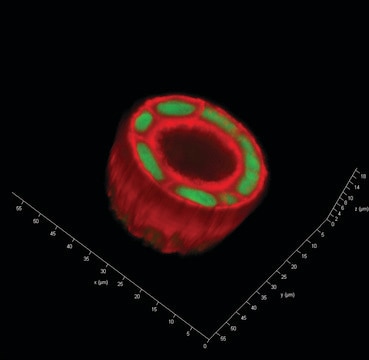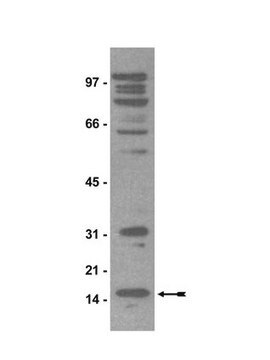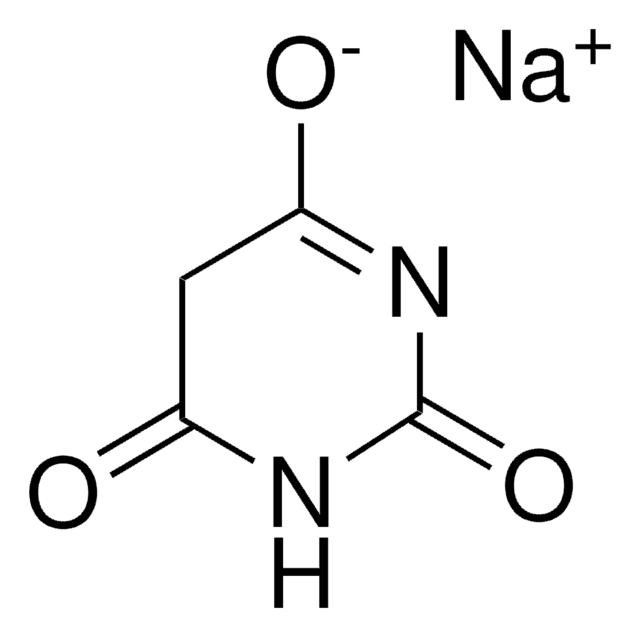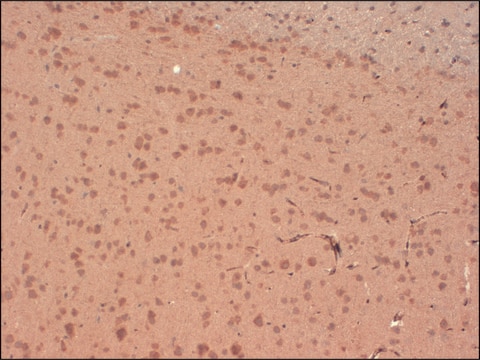General description
Histone H3.1t (UniProt: Q16695; also known as H3/t, H3tm, H3/g) is encoded by the HIST3H3 (also known as H3FT) gene (Gene ID: 8290) in human. Histone H3 has two main variants, H3.1 and H3.3, which show different genomic localization patterns in animals. The H3.1 and H3.3 complexes also possess distinct histone chaperones, CAF-1 and HIRA, which play important role in mediating DNA-synthesis-dependent and -independent nucleosome assembly. It has been reported that Histone H3.1 serves as the canonical histone, which is incorporated during DNA replication, whereas H3.3 acts as the replacement histone that can be incorporated outside of S-phase during chromatin-disrupting processes like transcription. Histone H 3.1 is a core component of nucleosome that is present only in mammals and is usually enriched in acetylation of Lysine 15 and demethylation of lysine 10 (HeK9Me2). It is expressed during S phase, then expression decreases significantly as cell division slows down during the process of differentiation. Histone H 3.1 expression is shown to be replication dependent. It s presence at the site of UV-induced DNA damage has also been reported. It has also been shown that H3.1/H4 tetramers do not split and remain intact during replication dependent deposition of H3.1 variant. Dimethylation of H3 on Arginine 17 has been linked to gene activation and activation of this modification is linked to cell fate regulation and increases the pluripotency potential of stem cells. In pancreatic beta cells expression of Protein arginine methyltransferase 4 (PRMT4) and demethylation of Arginine 17 is shown to increase under high glucose conditions. (Ref.: Kim, JK et al. (2015). J. Mol. Endocrinol. 54(3); 315-24).
Specificity
Broad cross-reactivity expected based on sequence homology among species.
This rabbit polyclonal antibody specifically detects human Histone H3 dimethylated on Arginine 17.
Immunogen
BSA-conjugated linear peptide corresponding to 11 amino acids from the N-terminal region of human Histone H3 dimethylated on Arginine 17 (methionine removed).
Application
Anti-dimethyl-Histone H3 (Arg17) Antibody is a Rabbit Polyclonal Antibody for detection of dimethyl-Histone H3 (Arg17) also known as H3R17me2, Histone H3 (di methyl R17) & has been validated in ELISA, ICC peptide inhibition & WB.
Peptide Inhibition Assay Analysis/Western Blotting: A 1:7,500 dilution from a representative lot detected dimethyl-Histone H3 (Arg17) in Histone H3 with CARM1. The dimethylation was inhibited in the presence of peptide containing Di-methyl Arg17.
ELISA:
A previous lot of this antibody was used in ELISA. At dilutions greater than 1:2000 this antibody is specific for peptides containing dimethylated Arg17. No cross-reactivity detected with a peptide containing dimethylated Arg26.
Immunocytochemistry:
An independent laboratory showed positive immunostaining for CARM-1 specific methylation of Histone H3 in 3134 cells.
Research Category
Epigenetics & Nuclear Function
Research Sub Category
Histones
Quality
Evaluated by Western Blotting in Histone H3 with CARM1.
Western Blotting Analysis: A 1:7,500 dilution of this antibody detected dimethyl-Histone H3 (Arg17) in Histone H3 treated with Histone-arginine methyltransferase (CARM1).
Target description
~17 kDa observed; 15.51 kDa calculated. Uncharacterized bands may be observed in some lysate(s).
Physical form
Immunoaffinity Chromatography
Purified rabbit polyclonal antibody in buffer containing 0.1 M Tris-Glycine (pH 7.4), 150 mM NaCl with 0.05% sodium azide.
Storage and Stability
Stable for 1 year at -20°C from date of receipt. Handling Recommendations: Upon receipt and prior to removing the cap, centrifuge the vial and gently mix the solution. Aliquot into microcentrifuge tubes and store at -20°C. Avoid repeated freeze/thaw cycles, which may damage IgG and affect product performance.
Analysis Note
Control
Calf thymus histone preparation, Acid HeLa cell extract.
Other Notes
Concentration: Please refer to the Certificate of Analysis for the lot-specific concentration.
Legal Information
UPSTATE is a registered trademark of Merck KGaA, Darmstadt, Germany
Disclaimer
Unless otherwise stated in our catalog or other company documentation accompanying the product(s), our products are intended for research use only and are not to be used for any other purpose, which includes but is not limited to, unauthorized commercial uses, in vitro diagnostic uses, ex vivo or in vivo therapeutic uses or any type of consumption or application to humans or animals.





